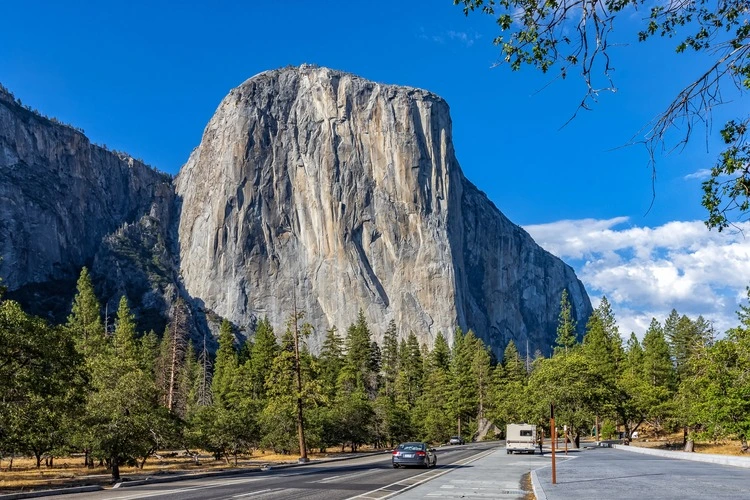
Step into the world of US national parks – from the vast plains of Alaska to the towering mountains of Tennessee and South Carolina
By
Across the US, there are 63 national parks, which have collectively have amassed more than 16 billion visits. The organisation which oversees these parks – the National Park Service – was formed back in 1916 and seeks to conserve some of the country’s most rich ecosystems, landscapes and wildlife and protect them for years to come.
While some are well known – like the Grand Canyon or Yellowstone, drawing in millions of visitors each year – others are in some of the most remote and desolate landscapes on earth, such as those in the plains of Alaska.
Enjoying this article? Check out our related reads:
Read on to explore the top three largest, oldest and most-visited US national parks:
The largest:
1) Wrangell-St. Elias National Park & Preserve – 13.2 million acres
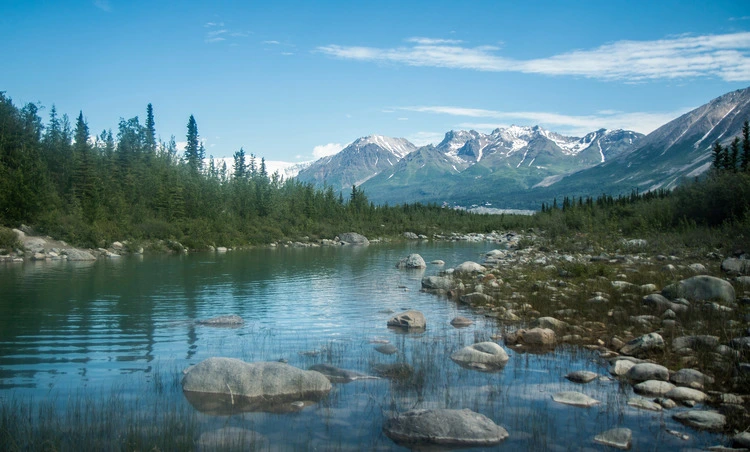
Equivalent in size to six Yellowstone National Parks, Wrangell-St Elias National Park and Preserve is the largest national park in the US, with its expansive terrain stretching across southeastern Alaska. Nine of the US’s sixteen largest peaks are within its confines, including the second-highest – Mount St. Elias – at 5,488 metres (more than 18,000 feet).
It was designated as a national park back in 1980. For those eager to explore the park, only two roads exist to the remote location, but access to the majority of Wrangell-St. Elias requires travel via bush plane.
A wide array of wildlife live in the harsh conditions of Wrangell-St Elias, including Dall sheep and mountain goats in the alpine region, caribou in the northern Wrangell Mountains and moose in the brushy areas and bogs. Back in 1950, bison were released into the Copper River Valley in the national park and can still be spotted today.
2) Gates of the Arctic National Park & Preserve – 8.5 million acres
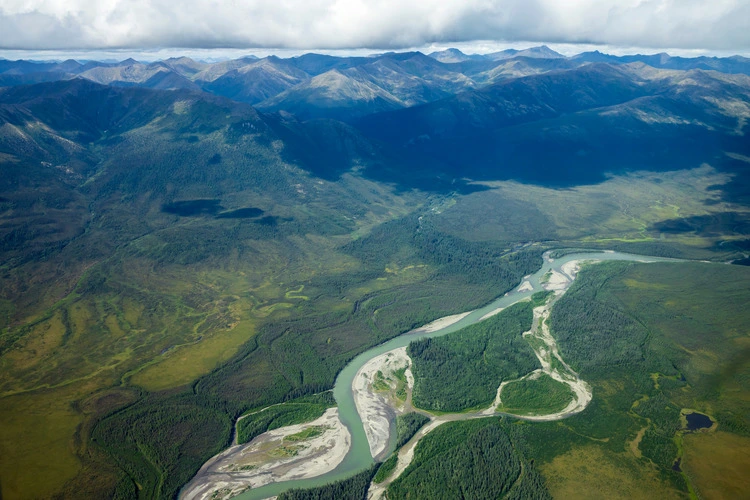
The second-largest national park in the US is the Gates of the Arctic National Park & Preserve, located across the Brooks Range of north-central Alaska. Here, rugged peaks, forest wilderness and tundra combine together to form the park’s 8.5 million acres of land entirely within the Arctic Circle.
Due to its barren and remote location – and with no cell service, amenities or roads to enter it – the national park is unsurprisingly the least visited in the US. For those wanting to brave the elements and visit the Gates of the Arctic, the National Park Service provide very clear instructions that visitors must be ‘self-reliant’ and able to ‘execute self-extraction and communication’ in the event of emergencies.
Established in 1980, the park contains a Western Arctic caribou herd. grizzly and black bear, wolf, moose, Dall sheep, and foxes among other species.
3) Denali National Park & Preserve – 6.1 million acres
Number three is Denali National Park and Preserve in Alaska, which has six million acres of tundra, forest, and snowy mountains and just one road entering its vast area. The national park was established back in 1917, and perhaps its most iconic feature is being home to North America’s highest peak, Denali, which towers 6,197 metres (more than 20,000ft) above the landscape.
Although Mount Denali is so high, it is said that just 30 per cent of those visiting are actually able to spot it due to high cloud coverage and inclement weather.
Much like other national parks in the US, it is possible to see the ‘Big Five’ while there: caribou, Dall sleep, wolves, moose and grizzly bears, all of which make up Denali’s 139 species of mammals.
Currently, due to a landslide known as the Pretty Rocks Landslide, the road to enter the Denali National Park is shut off at Mile 43, a closure expected to remain in place until summer 2026. For visitors wanting to explore further into the national park, air travel is the only viable option.
The oldest:
1) Yellowstone National Park – 1872
The US’s first national park – and widely regarded as the world’s first – Yellowstone stretches 5,632 kilometres (3,500 miles) across Wyoming, with parts of the national park extending into Montana and Idaho. The topography of Yellowstone can be attributed to its location in a tectonically active area of the world, experiencing around 1,500-2,500 earthquakes each year. While most of these earthquakes are so low in magnitude that humans cannot feel them, they are detected by seismological monitoring equipment.
Historical eruptions at Yellowstone formed what is known today as the Yellowstone Caldera, an oval-shaped basin stretching 50 by 70km (30 by 45 miles) wide.
One of the most unique features of Yellowstone is its quantity of geysers and hot springs – it is home to more than anywhere else in the world, and within the park alone around 50 per cent of the world’s hydrothermal features can be found. Old Faithful, the most popular of these geysers, frequently has eruptions between 100-180 feet that can last anywhere from one to five minutes.
At the moment, the geyser erupts around 20 times a day, and these can be predicted by scientists to be within a ten-minute variation.
2) Sequoia National Park – 1890
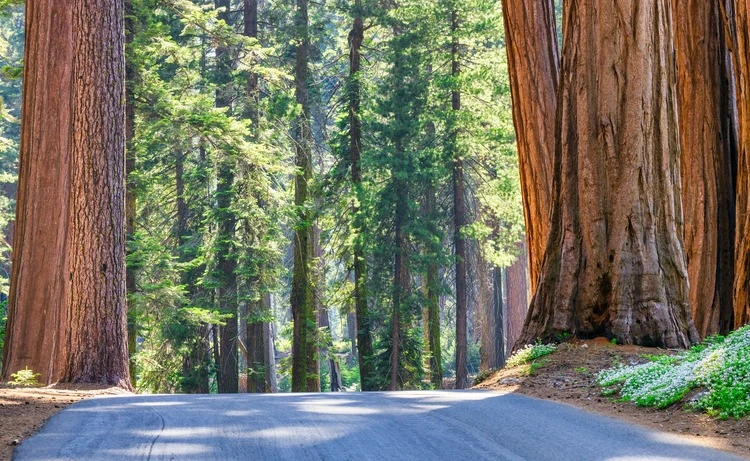
Sequoia National Park is located in Sierra Nevada in east-central California and was the second national park founded in the US. The national park is most famous for its groves of giant sequoia trees, and its creation was primarily to protect these from logging – making it the first national park formed to protect a living organism.
Another main feature of the park is a deep canyon that runs through its eastern portion, as well as rivers and lakes which form vital lifelines for wildlife as well as farms and cities in California’s Central Valley.
For its first twenty years, US Army Cavalry troops protected the park, and it only grew as a popular destination after the rise of automobile travel in the late 1920s.
3) Yosemite National Park – 1890

Known for its vast waterfalls, Yosemite stretches for more than 1,931 kilometres (1,200 miles) east of San Francisco and southeast of Sacramento. Almost 95 per cent of the park’s 747,956 acres of land is classified as wilderness.
El Capitan is one of the national park’s most notable features, a vertical rock formation standing 2,307 metres (7,569 feet) above sea level.
Giant sequoias are also in the park, estimated to be more than 3,000 years old.
The most visited:
1) Great Smoky Mountains National Park – 13.3 million visitors

Straddling the border between North Carolina and Tennessee, the Great Smoky Mountains National Park is the most visited national park in the US, and receives more tourism than Yosemite, Yellowstone and Grand Canyon combined. Its impact on the local economy is vast – in 2023 alone, The Great Smoky Mountains National Park generated more than $2.2 billion and supported 33,748 jobs.
Established in 1926, the park is often referred to as the Smokies for the constant fog that surrounds it during the mornings.
Numerous waterfalls draw tourists in droves to the national park, with large falls including Grotto, Laurel, Abrams, Rainbow and Mingo, as well as more than 150 trails – including parts of the famous Appalachian Trail – and 4,667km (2900 miles) of streams.
2) Grand Canyon National Park – 4.7 million visitors
The second-most visited national park in the US is the 227-mile long Grand Canyon National Park, entirely situated within the state of Arizona and located on the ancestral homelands of 11 present-day tribal communities. In 2023, the national park – established in 1919 – generated $768 million in visitor spending, supporting 10,000 jobs.
The mile-deep canyon within the national park is of course its most famous landmark, attracting tourists from all across the world. It was formed by the Colorado River which flows west through the canyon, another must-see for those visiting the national park.
3) Zion National Park – 4.6 million visitors
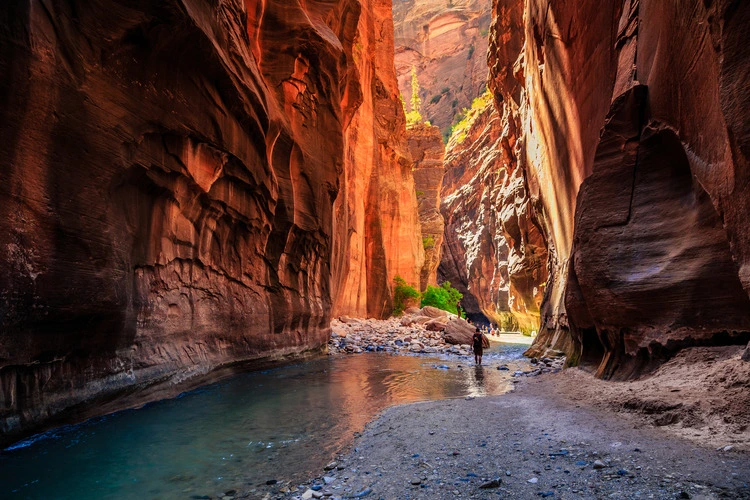
Tourism has rocketed in the US’s Zion National Park in the last decade, from 2.6 million visits back in 2010 to a peak of more than five million. Located in southwestern Utah, the national park’s main features are the Zion Canyon – 15 miles long and almost 3,000 feet deep at parts – and its huge sandstone cliffs, some of the tallest in the world.
Whereas the Grand Canyon is mostly viewed from tourists from the rim down below, Zion National Park instead offers a glimpse of the canyon from the bottom-up: a unique vantage point attracting throngs of tourists each year.
Another reason for its rocketing numbers is Zion National Park’s convenient proximity to Las Vegas, just a three-hour drive away. That means that the 42 million tourists who visit Vegas each year likely add on a trip to the national park, especially to its two most popular trails: Angel’s Landing and the Narrows
A trip to the park also means ticking off a biodiversity hotspot: Zion National Park is also home to more flowers than anywhere else in Utah, with ecosystems that support around 800 native species. As well as this, more than 290 bird species have been recorded in the park, along with strong populations of mule deer, bats, cottontail rabbits and rock squirrels.



